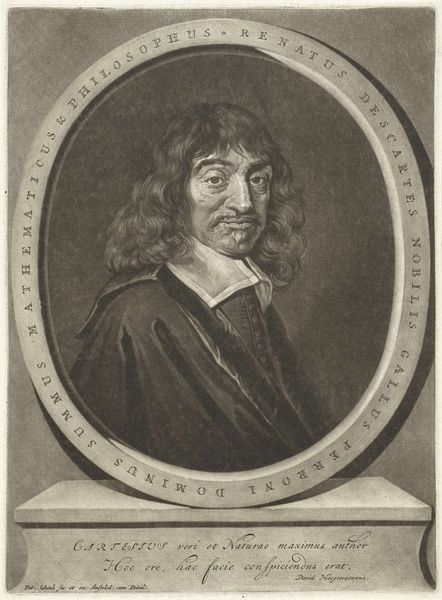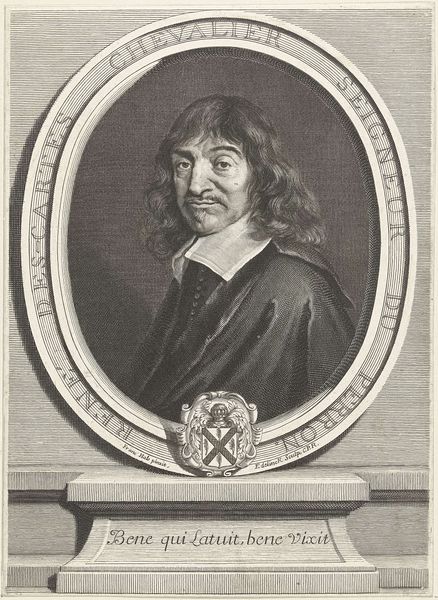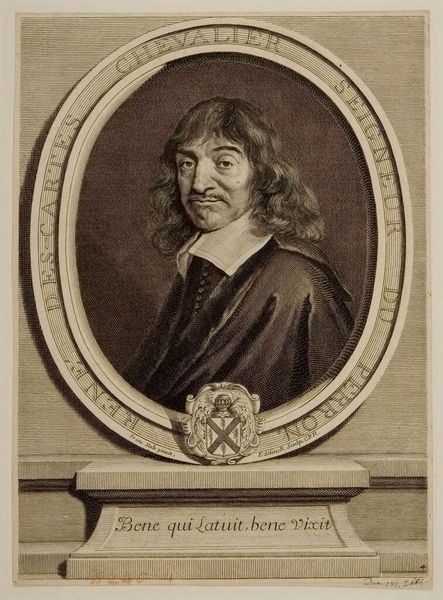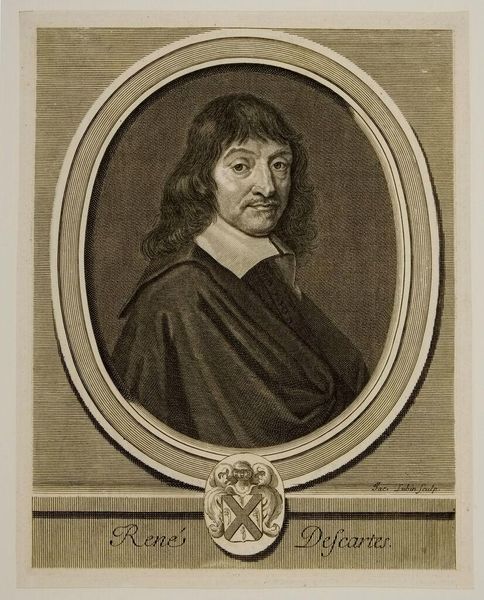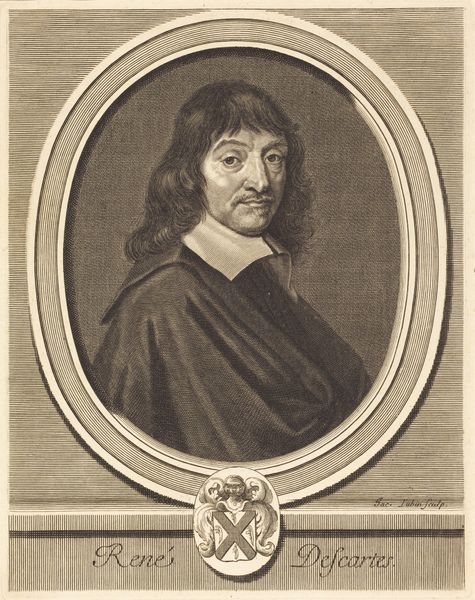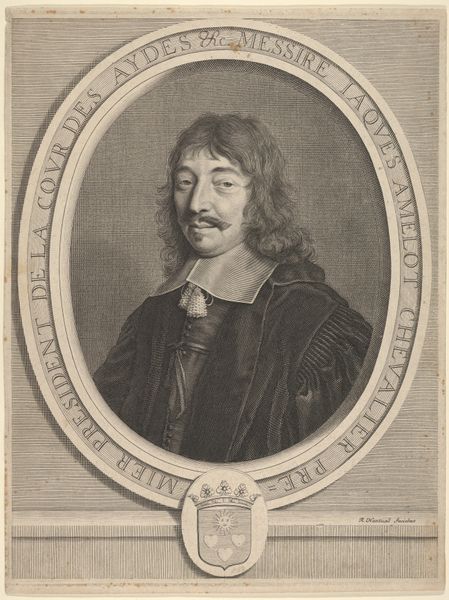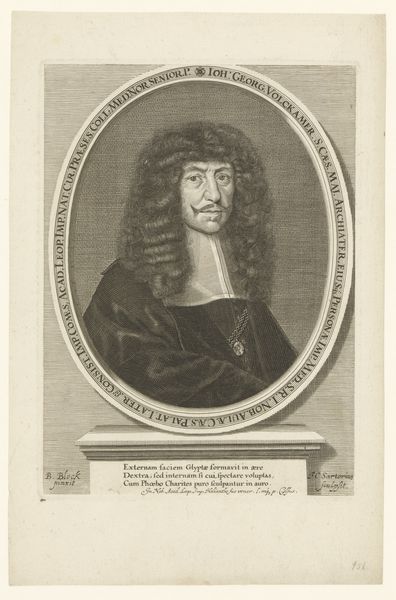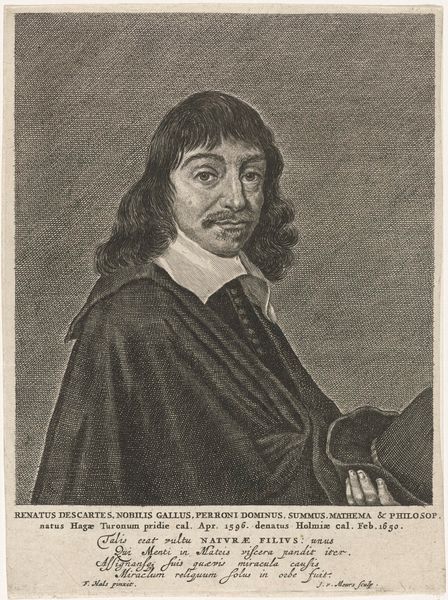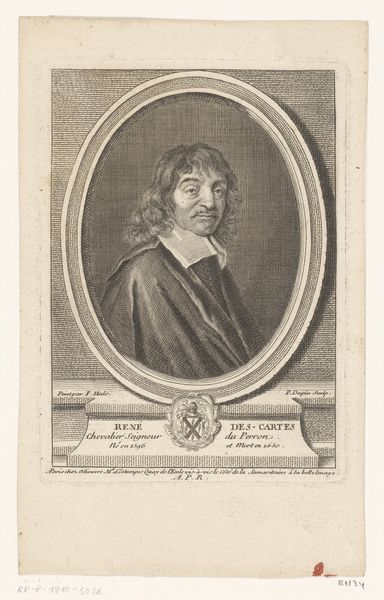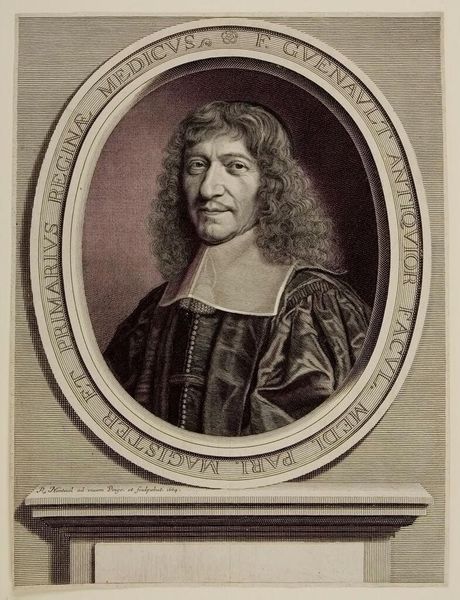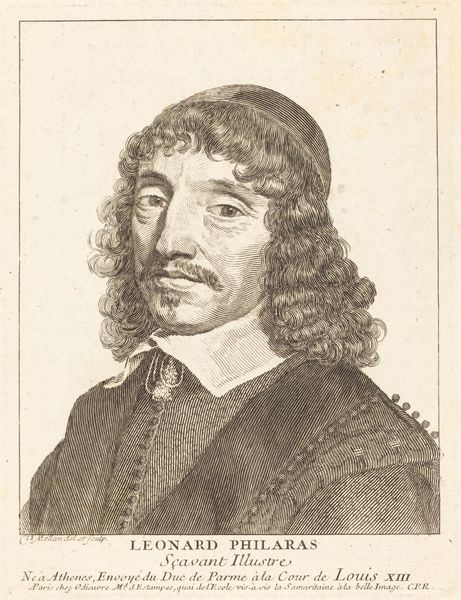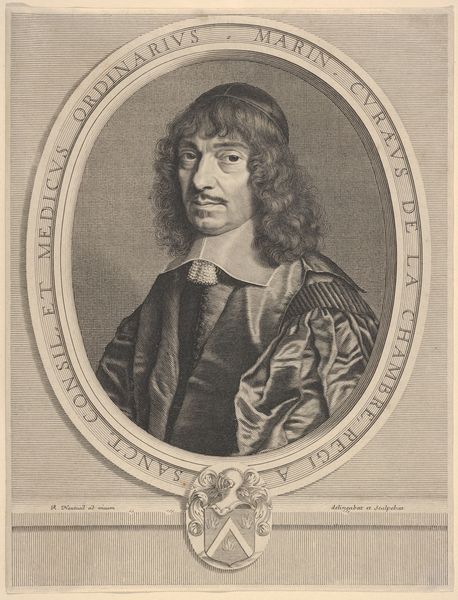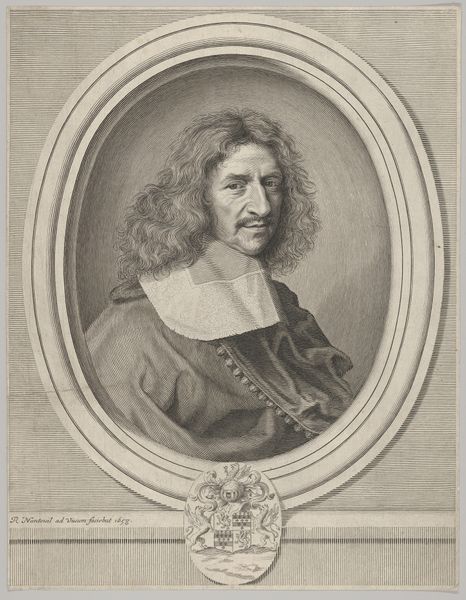
print, engraving
#
portrait
#
baroque
# print
#
old engraving style
#
old-timey
#
limited contrast and shading
#
history-painting
#
engraving
Dimensions: height 255 mm, width 180 mm
Copyright: Rijks Museum: Open Domain
Editor: Here we have Jacob Gole's "Portret van René Descartes," an engraving created sometime between 1670 and 1724. It's quite striking, with that limited contrast giving it an almost ethereal feel. What stands out to you in this particular print? Curator: I immediately focus on the material production of this portrait. Consider the labor involved in engraving, each line etched by hand. How does that affect our perception of Descartes himself, a figure so associated with abstract thought? Editor: So, instead of just seeing Descartes the philosopher, you see the engraver, Jacob Gole, and the whole production process? Curator: Precisely! We’re dealing with a reproduction, not an original painting. Think about the societal need to circulate and consume his image and, by extension, his ideas. Who was this print intended for? Was it aimed at academics, wealthy collectors, or perhaps a broader public eager for knowledge? The very act of creating and distributing this image speaks volumes about Descartes' influence and the cultural machinery that amplified it. The tools and labor that were needed to generate an aesthetic object are just as, or perhaps more, important than Descartes’ gaze in assessing this work. Editor: That's fascinating. I hadn't considered how the choice of engraving as a medium influences its reception. I was just thinking about it as a portrait of an important person. Curator: It's easy to get lost in the subject, but the medium itself is the message. And the message here is about dissemination, reproduction, and the democratizing potential—as well as the potential manipulation— inherent in printed images. Editor: I see. So, by examining the material, we are investigating the broader forces at play? Curator: Exactly. It transforms our understanding from simple portraiture to an examination of 17th-century intellectual and material culture. It makes me consider how printmaking has shaped our understanding of philosophy itself! Editor: Thanks! It’s really enlightening to consider beyond what's being represented, to the materials and the labor that went into making it.
Comments
No comments
Be the first to comment and join the conversation on the ultimate creative platform.
